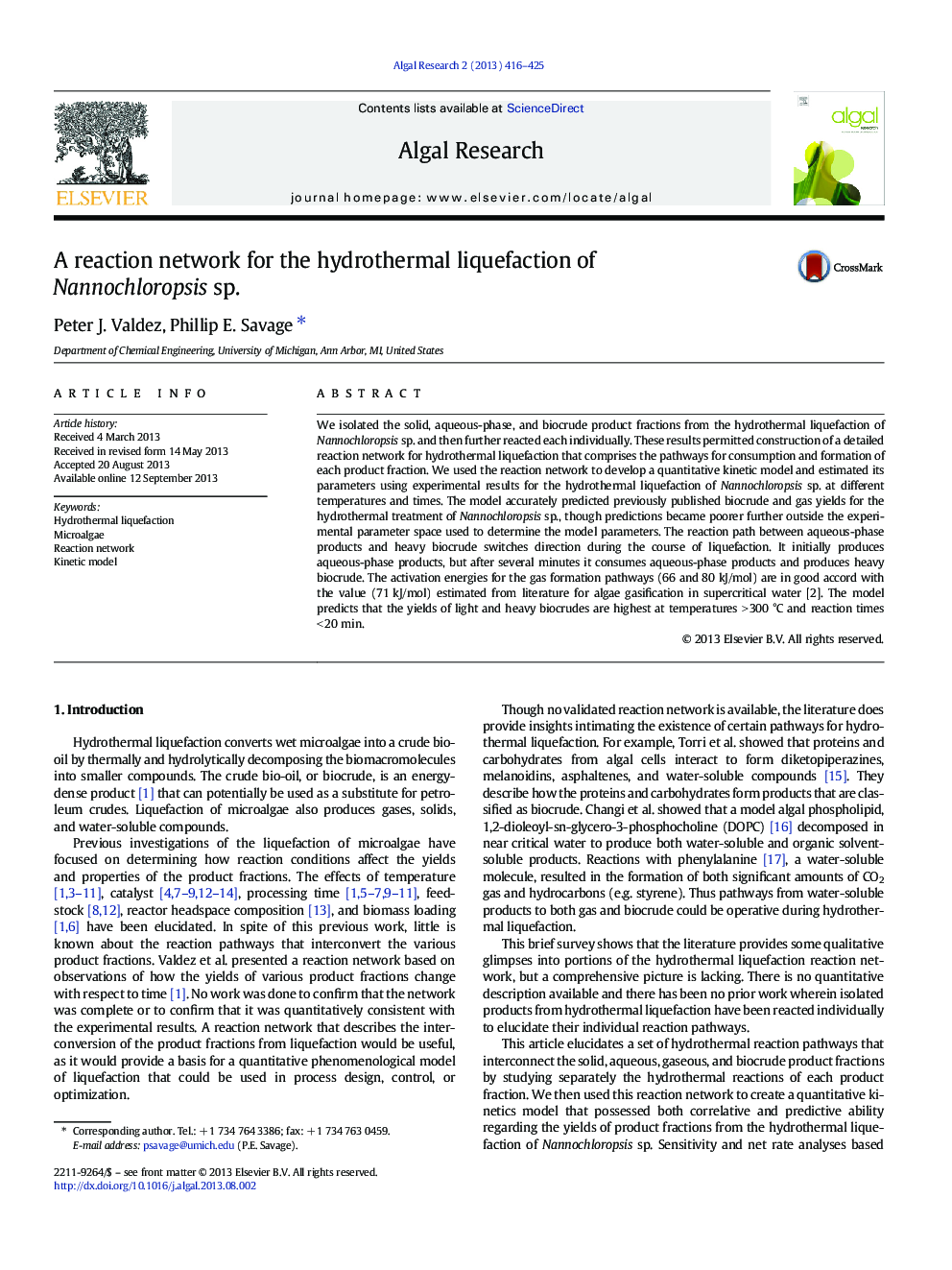| Article ID | Journal | Published Year | Pages | File Type |
|---|---|---|---|---|
| 10687558 | Algal Research | 2013 | 10 Pages |
Abstract
We isolated the solid, aqueous-phase, and biocrude product fractions from the hydrothermal liquefaction of Nannochloropsis sp. and then further reacted each individually. These results permitted construction of a detailed reaction network for hydrothermal liquefaction that comprises the pathways for consumption and formation of each product fraction. We used the reaction network to develop a quantitative kinetic model and estimated its parameters using experimental results for the hydrothermal liquefaction of Nannochloropsis sp. at different temperatures and times. The model accurately predicted previously published biocrude and gas yields for the hydrothermal treatment of Nannochloropsis sp., though predictions became poorer further outside the experimental parameter space used to determine the model parameters. The reaction path between aqueous-phase products and heavy biocrude switches direction during the course of liquefaction. It initially produces aqueous-phase products, but after several minutes it consumes aqueous-phase products and produces heavy biocrude. The activation energies for the gas formation pathways (66 and 80 kJ/mol) are in good accord with the value (71 kJ/mol) estimated from literature for algae gasification in supercritical water [2]. The model predicts that the yields of light and heavy biocrudes are highest at temperatures > 300 °C and reaction times < 20 min.
Related Topics
Physical Sciences and Engineering
Energy
Renewable Energy, Sustainability and the Environment
Authors
Peter J. Valdez, Phillip E. Savage,
